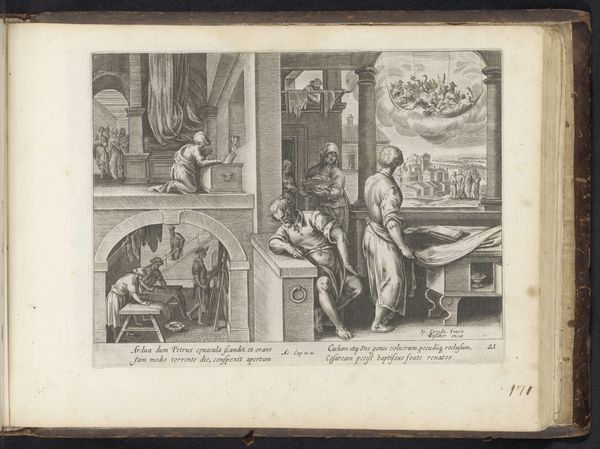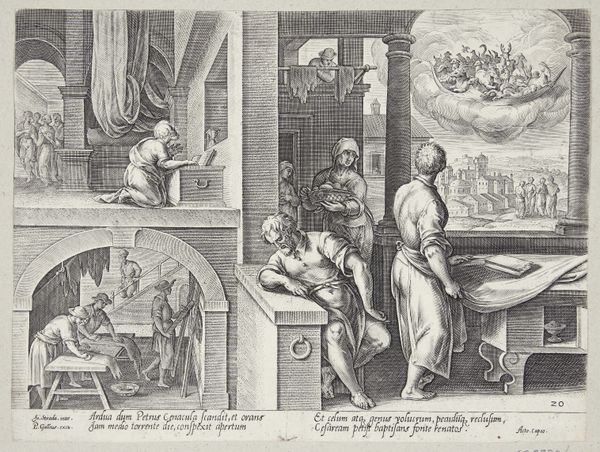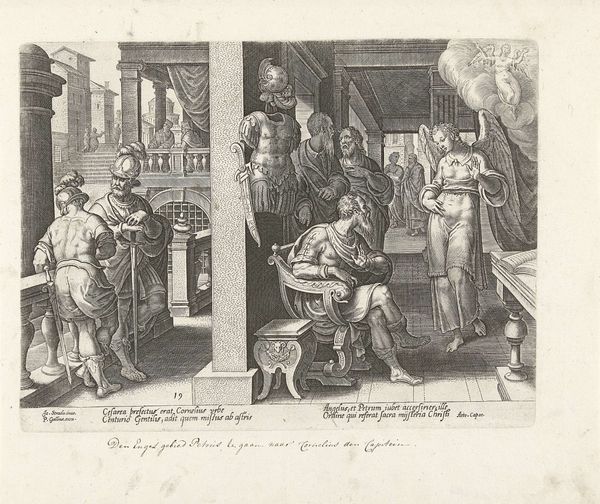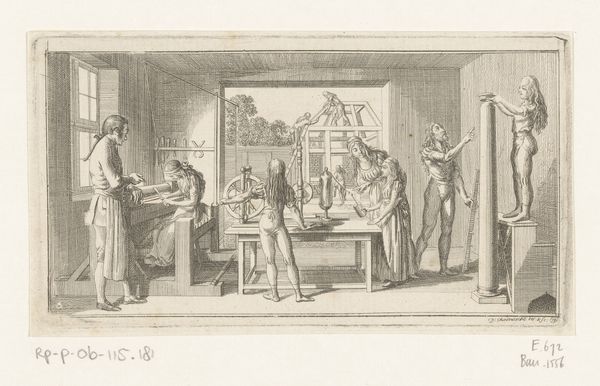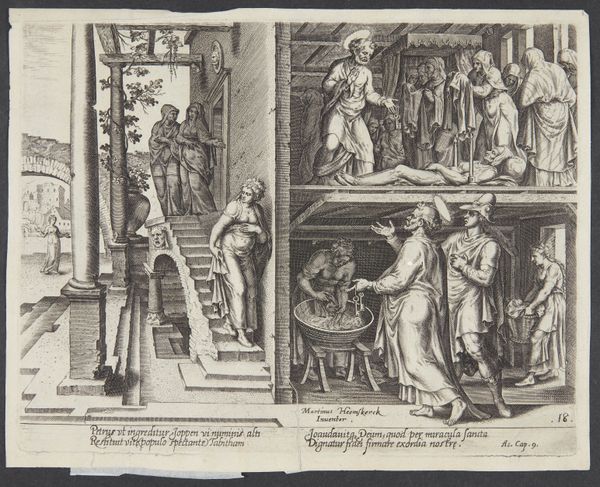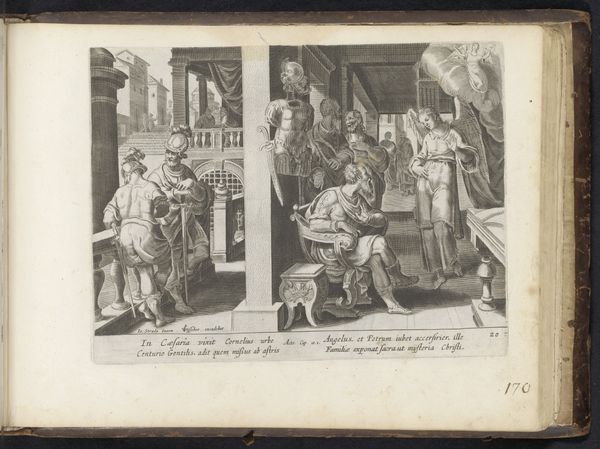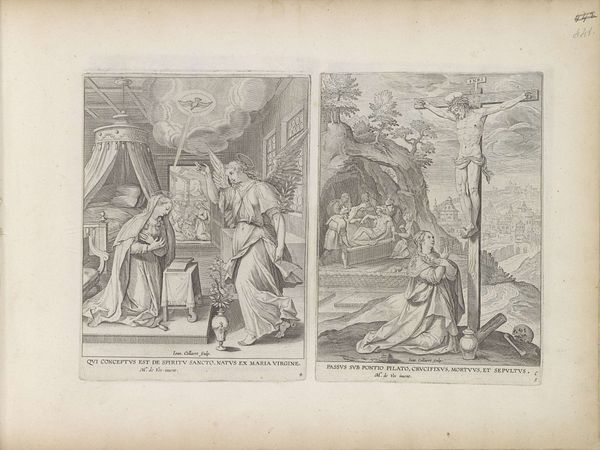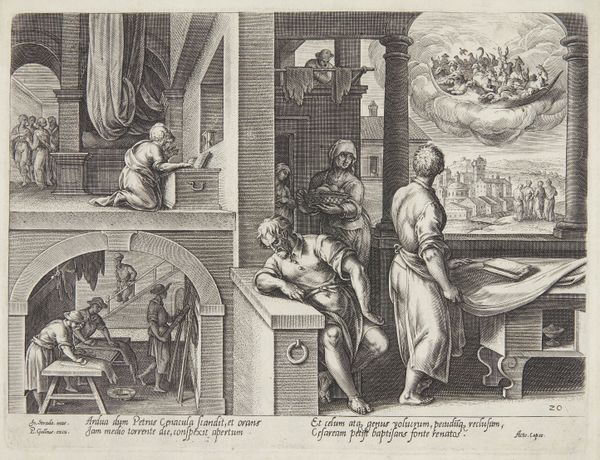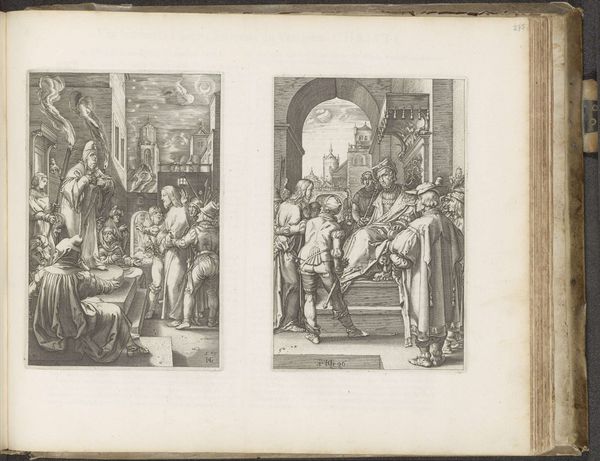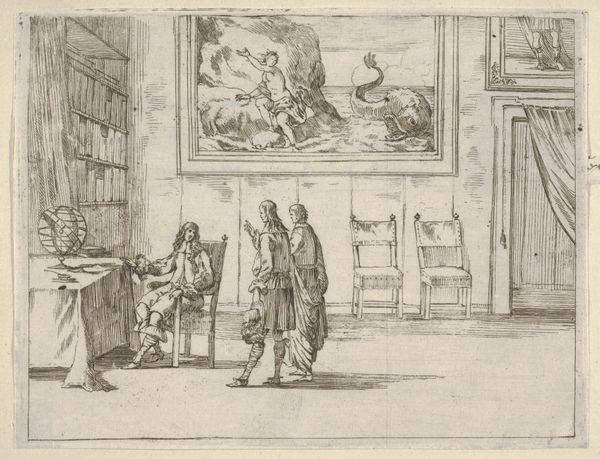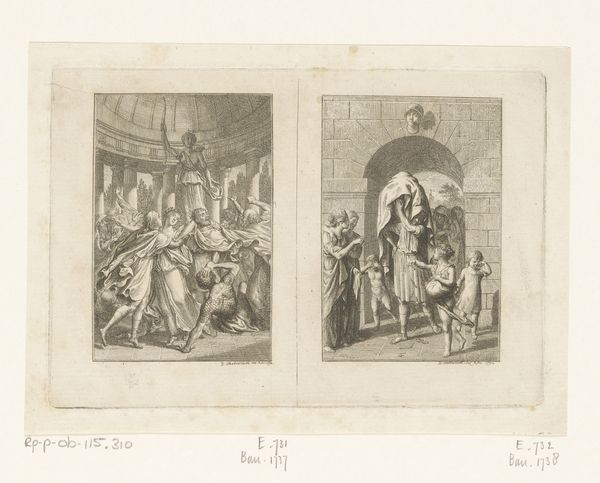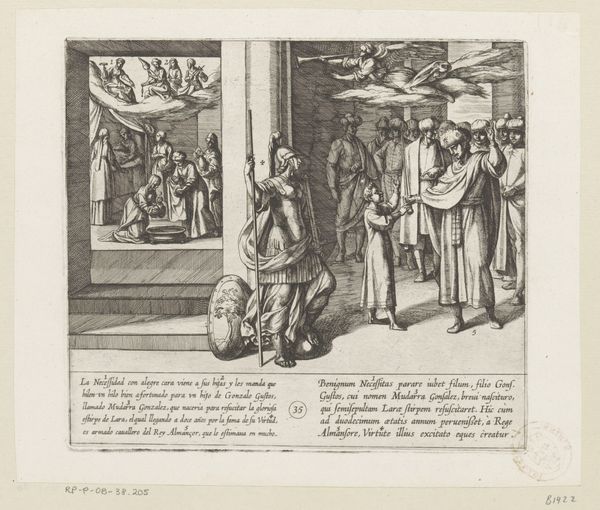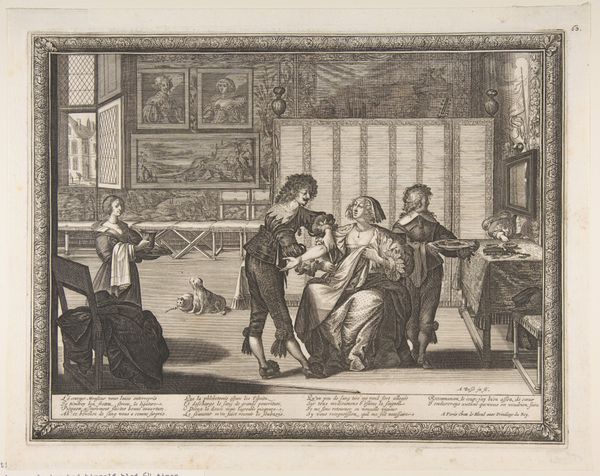
graphic-art, print, etching, engraving
#
graphic-art
# print
#
etching
#
old engraving style
#
mannerism
#
history-painting
#
engraving
Dimensions: height 202 mm, width 255 mm
Copyright: Rijks Museum: Open Domain
Curator: Alright, let's turn our attention to a rather intriguing piece here at the Rijksmuseum. It's a 1582 etching and engraving by Philips Galle, titled "Vision of the Unclean Animals." Editor: Well, "intriguing" is one word for it! My first impression is a slightly unnerved one. It's like a fragmented dream—a claustrophobic stage for a drama I'm not quite sure I want to see unfold. There's something about the sharp contrasts that makes it both fascinating and unsettling. Curator: That unsettled feeling makes perfect sense when we look at the symbolism. Galle uses imagery associated with the vision of the unclean animals from the Bible. These animals signify impurities and are linked to the challenging transitions happening during the Reformation. Note the multiple scenes within a scene, the complex layering and perspective. Editor: Ah, the Reformation… that explains the vibe. So those shadowy figures huddled together are supposed to be… unclean? I see them, trapped inside and weighed down by the etching’s detail and shading. You really feel their plight. What does it tell us about cultural attitudes then? Curator: Galle invites reflection on purity and sin, themes deeply embedded in the era’s psyche. Galle encourages an inward look and reminds us of the continuous presence of impurity even within apparent purity. I believe it reveals a culture grappling with new freedoms and potential corruptions. The symbolic use of space is intriguing, showing literal separation from society due to supposed inner sin. Editor: It makes you wonder what was considered "unclean" then. It all seems so stark, so black and white. Today, our notions of impurity are more blurred. This print reminds us how relative morality can be and how judgmental societal beliefs can get solidified into "truths." I feel a lot of melancholy emanating from this piece too, actually. Like a bygone era lamenting something that has passed… perhaps their past beliefs or lifestyle. Curator: It's interesting you mention that, since Galle wasn't afraid to comment about contemporary issues! A print such as this becomes a mirror reflecting the culture, its values, and also, implicitly, its anxieties. Thank you for this reading, by the way, it provides an entry into the understanding of Mannerism and how emotion, perspective, and composition interact. Editor: It goes both ways. Looking closer, the intensity has subsided and turned into contemplation. Maybe there’s hope somewhere in there. Or acceptance that shadows and darkness will coexist forever… just another reflection from Philips Galle!
Comments
No comments
Be the first to comment and join the conversation on the ultimate creative platform.
